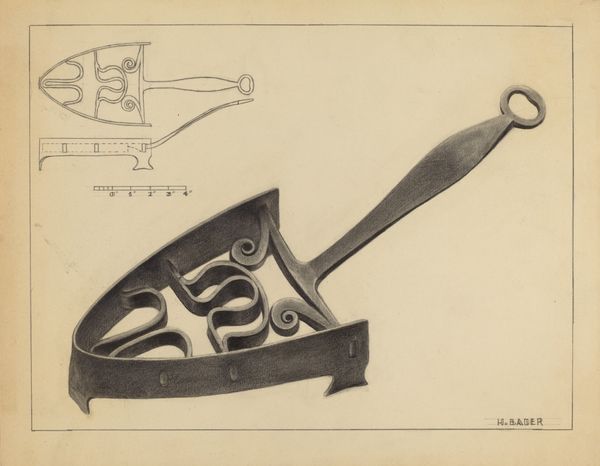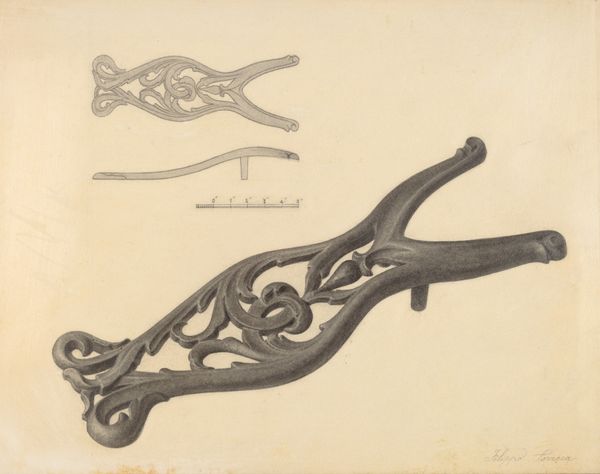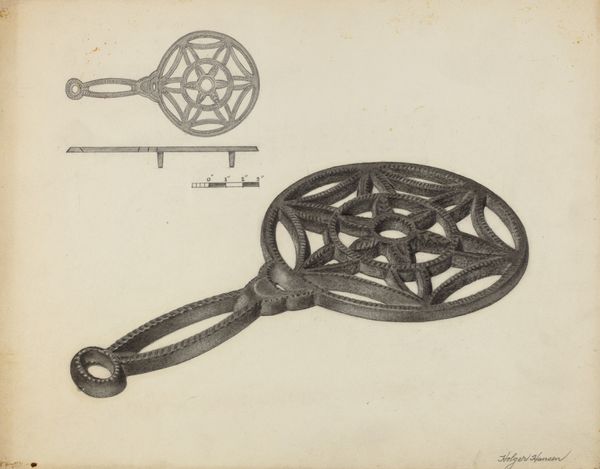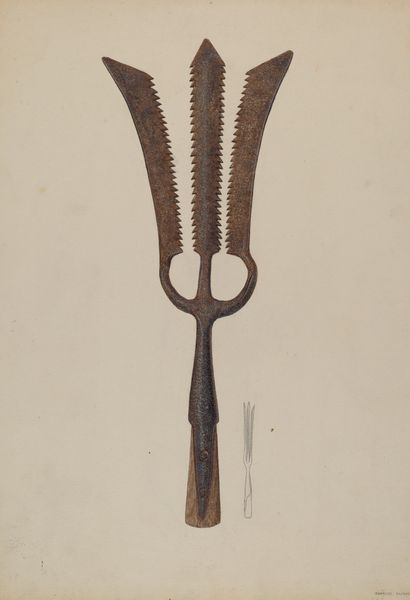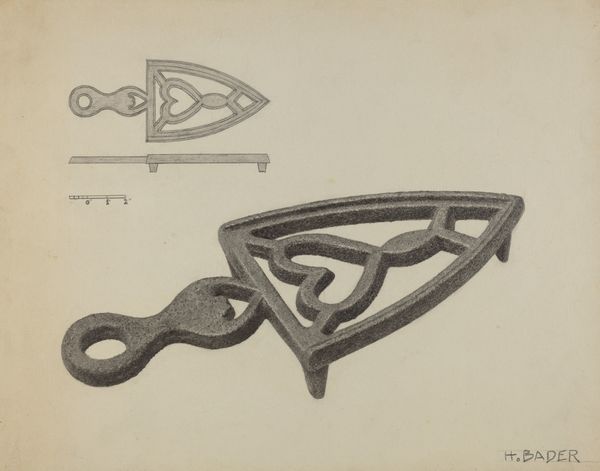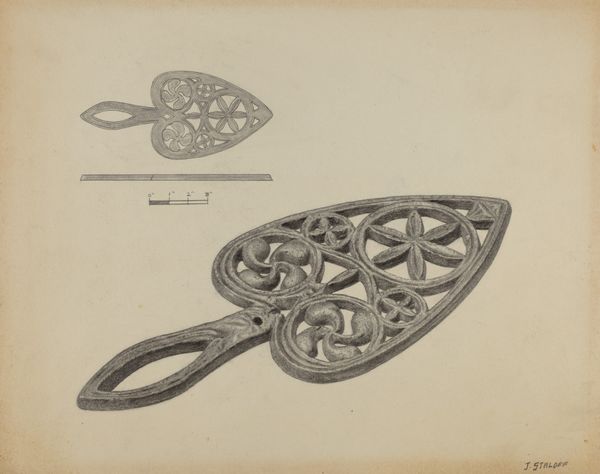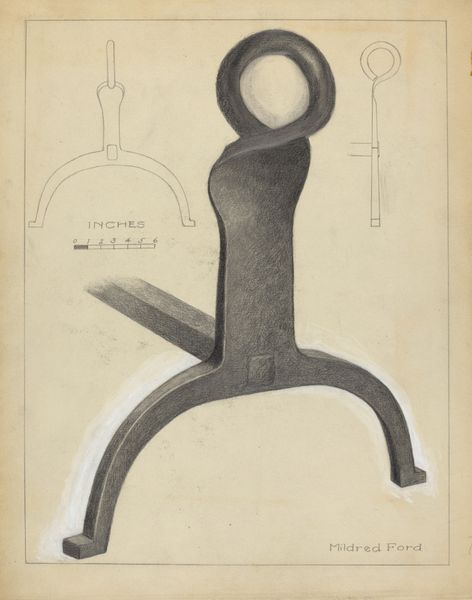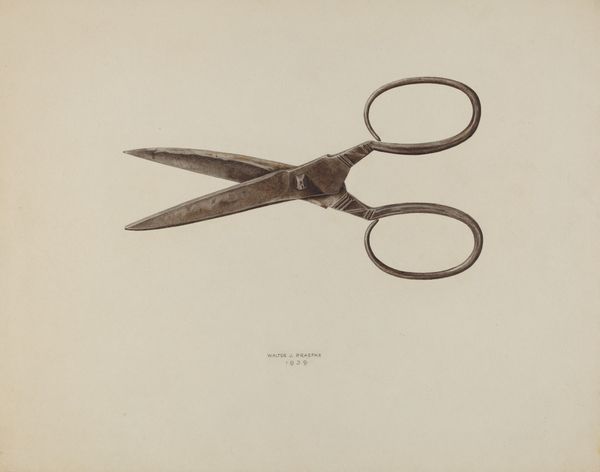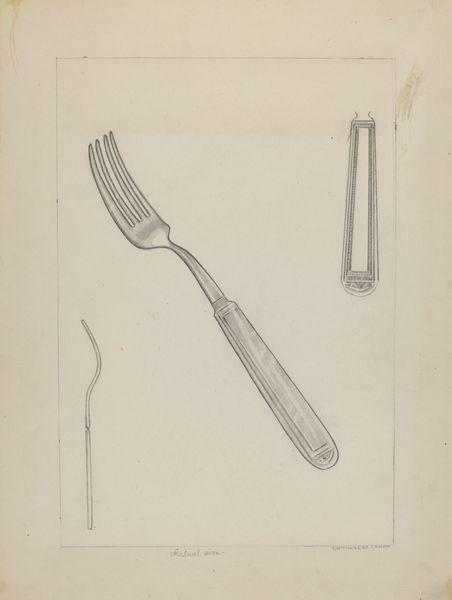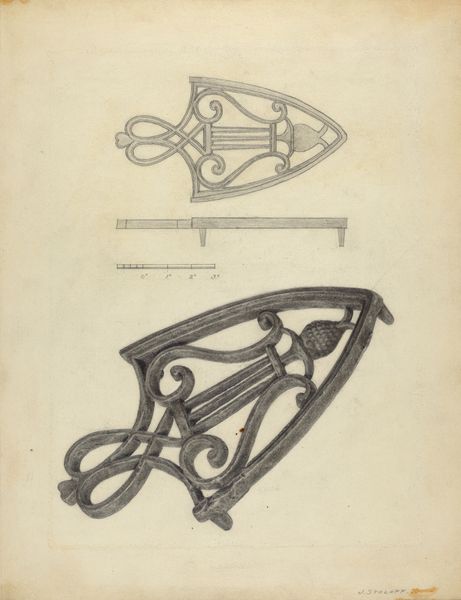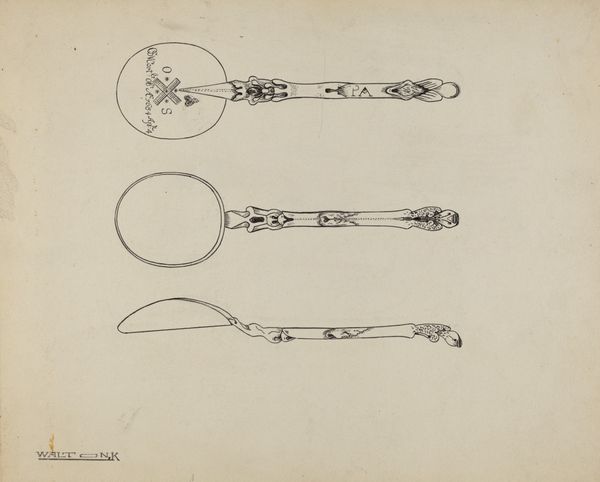
drawing, pencil, graphite
#
pencil drawn
#
drawing
#
pencil drawing
#
pencil
#
graphite
#
realism
Dimensions: overall: 22.5 x 29 cm (8 7/8 x 11 7/16 in.) Original IAD Object: 20 1/4" long; 5 3/4" wide
Copyright: National Gallery of Art: CC0 1.0
Editor: So, here we have Salvatore Borrazzo's "Bootjack," made around 1937. It's a graphite drawing, and it feels almost like a technical diagram. What strikes me are the ornate circular patterns worked into what is, essentially, a utilitarian object. What do you make of it? Curator: I'm immediately drawn to the inherent symbolism within this ordinary object, elevated by Borrazzo's detailed realism. The bootjack, in its function, represents a kind of release, the shedding of a daily burden. Editor: A release, how so? Curator: Think about the era. 1937. The tail end of the Depression. Shoes weren't merely fashion; they were protection, often worn all day, every day. The bootjack becomes symbolic of leaving behind the hardships of the outside world, a return to domestic comfort and ease. The circular patterns, you see, they aren't merely decorative. The circle often represents wholeness, continuity. It could symbolize the cyclical nature of life. Borrazzo isn't just drawing an object; he is encapsulating a feeling, a collective memory of a weary nation seeking solace. Editor: That’s fascinating! I hadn't considered how much weight such a simple object could carry, how much cultural context could be packed into the design and its depiction. Curator: It's the artist’s hand that transforms the mundane into something profound. Through his rendering, Borrazzo acknowledges both the object’s utility and its subtle power to evoke deeper cultural meanings. Editor: I'll definitely be looking at everyday objects differently now, thinking about the stories they might tell. Curator: Exactly. These objects hold immense symbolic value; it is up to us to learn how to read them.
Comments
No comments
Be the first to comment and join the conversation on the ultimate creative platform.

